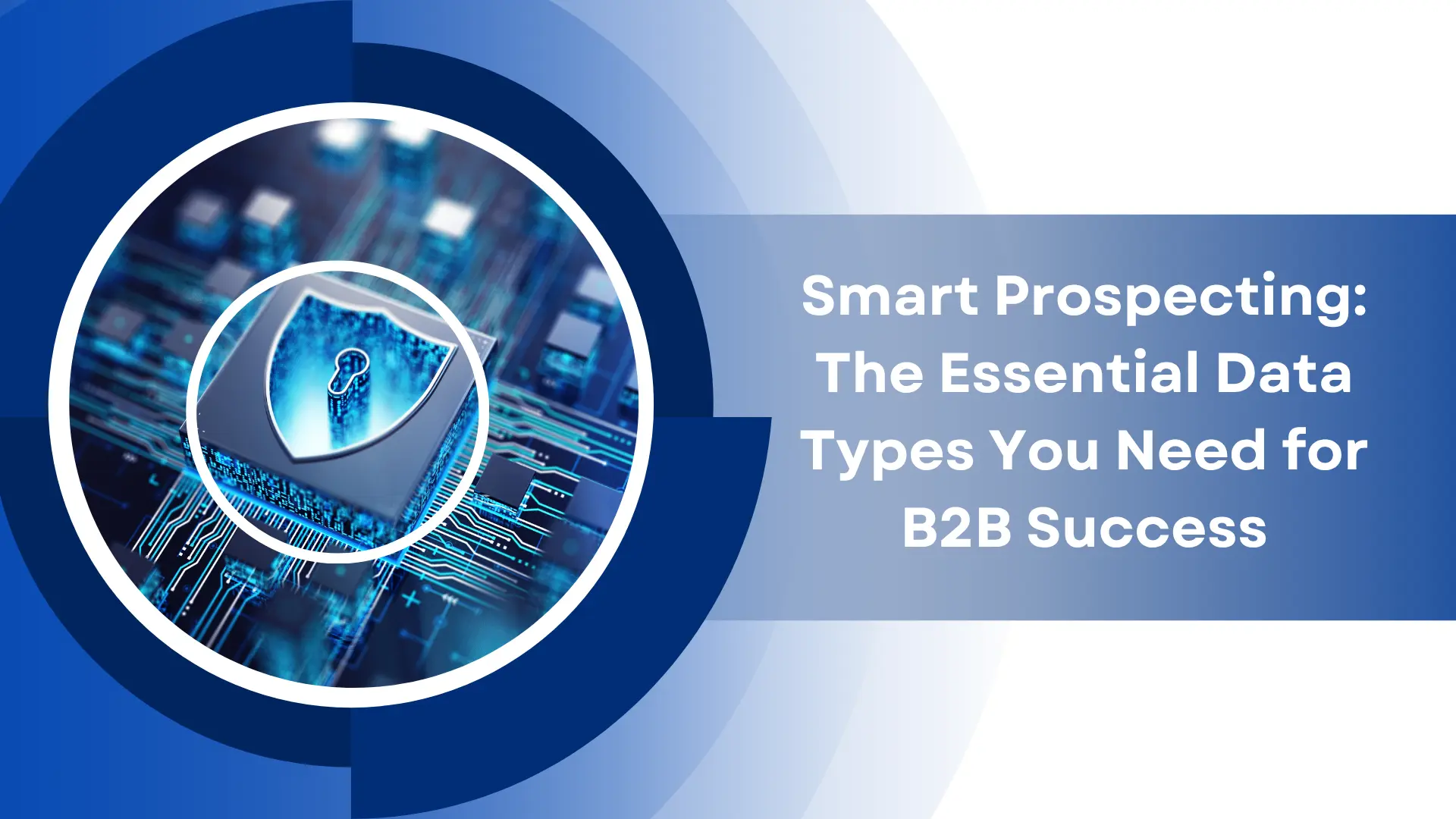Table of Contents
Smart Prospecting: The Essential Data Types You Need for B2B Success
Introduction
In today’s competitive B2B landscape, successful prospecting is no longer about casting a wide net. It’s about using data-driven intelligence to identify, engage, and convert the right accounts at the right time. With the rise of Smart Cloud technologies, businesses now have the ability to collect, process, and analyze multiple layers of prospect data in real-time — turning raw information into actionable insights.
At IT Tech Buzz, we believe the key to B2B growth lies in understanding the different types of data that fuel smarter prospecting strategies.
1. Intent Data: Predicting Buyer Readiness
- What it is: Intent data shows signals that indicate when a company or individual is actively researching solutions like yours (e.g., visiting product pages, downloading whitepapers, or searching competitor keywords).
- How to source: Intent data can be collected through website analytics, third-party intent providers, or Smart Cloud-based platforms that integrate data across search engines, industry forums, and content syndication networks.
- Why it matters: It helps sales teams prioritize accounts already showing interest, reducing wasted effort on cold outreach.
💡 Example: A SaaS company noticed increased searches for “cloud security compliance” from target accounts. By aligning outreach with these signals, they increased conversion rates by 27%.
2. Technographic Data: Understanding Technology Stacks
- What it is: Technographic data reveals the technology tools and platforms a prospect is already using.
- Use case: If a company uses Salesforce CRM, you can pitch solutions that integrate seamlessly with their stack.
- Smart Cloud advantage: Cloud-based tools can scan web domains and aggregate tech adoption trends at scale.
💡 Example: A marketing automation provider used technographic data to target HubSpot users and positioned its solution as a “HubSpot booster,” leading to faster deal closures.
3. Firmographic Data: Profiling the Company
- What it is: Firmographic data includes company size, revenue, industry, and location.
- Why it matters: It ensures your outreach is tailored to business realities (e.g., a startup vs. a Fortune 500).
- Smart Cloud role: Cloud-based CRM and BI tools help enrich firmographic data for real-time segmentation.
💡 Example: A cybersecurity firm segmented firms by revenue brackets. SMBs received lower-cost packages, while enterprises received compliance-focused solutions.
4. Recency Data: Timing is Everything
- What it is: Data on how recently a lead interacted with your brand (e.g., attending a webinar last week vs. downloading a report six months ago).
- Why it matters: Fresh interactions mean higher conversion probability.
- Smart Cloud use: Cloud-driven analytics platforms track recency across multiple channels, ensuring no signal is missed.
5. Engagement Data: Measuring Buyer Interest
- What it is: Tracks how actively prospects interact with your brand (email opens, webinar attendance, demo requests).
- Why it matters: High engagement signals stronger buying intent.
- Smart Cloud benefit: Engagement dashboards unify cross-channel data in real-time, giving sales and marketing a single view of prospect activity.
6. The Three Sources of Data for Prospecting
- First-Party Data: Information you collect directly from your website, CRM, and campaigns.
- Second-Party Data: Data shared through partnerships (e.g., co-hosted webinars, affiliate platforms).
- Third-Party Data: Purchased or licensed data from external providers.
💡 Example: A B2B SaaS company combined first-party website analytics with third-party intent signals from industry portals. This blended approach helped shorten sales cycles by 22%.
7. Smart Cloud: The Backbone of Modern Prospecting
Traditional systems often silo data, making it difficult to see the full buyer journey. With Smart Cloud solutions, businesses can:
- Aggregate intent, firmographic, and engagement data into one platform.
- Apply AI and machine learning to predict which accounts are most likely to convert.
- Scale prospecting efforts globally without losing personalization.
💡 Real-world example: In 2025, many enterprises shifted to Smart Cloud-based marketing platforms to unify ABM campaigns. This allowed them to deliver personalized outreach to buying groups across industries, resulting in a 35% lift in pipeline velocity.
Effective B2B prospecting is no longer about guessing who might buy — it’s about leveraging data and Smart Cloud technology to pinpoint the right accounts at the right time. From intent and technographic signals to engagement and recency insights, combining multiple data types helps businesses move beyond cold outreach into precision-driven engagement.
At IT Tech Buzz we help organizations harness these data-driven strategies to fuel smarter prospecting, stronger pipelines, and faster revenue growth.
B2BProspecting #LeadGeneration #SmartCloud #DataDrivenMarketing #IntentData #Technographics #Firmographics #BusinessGrowth
